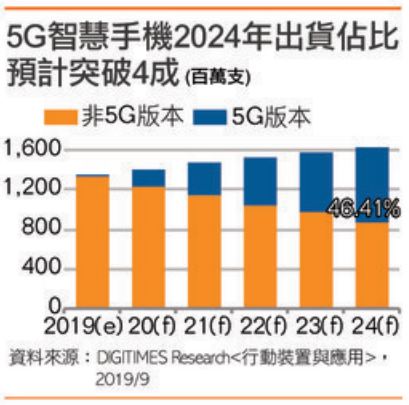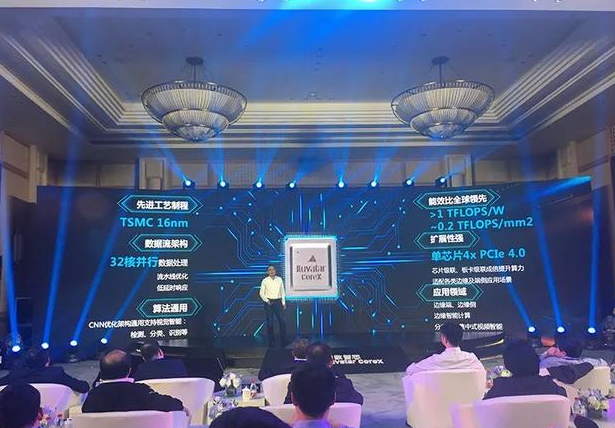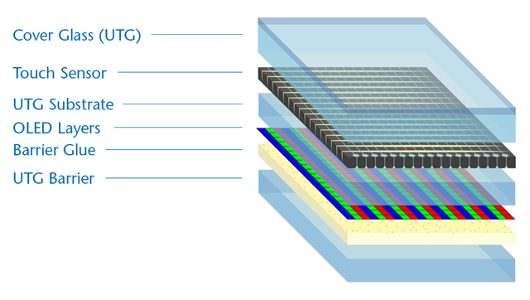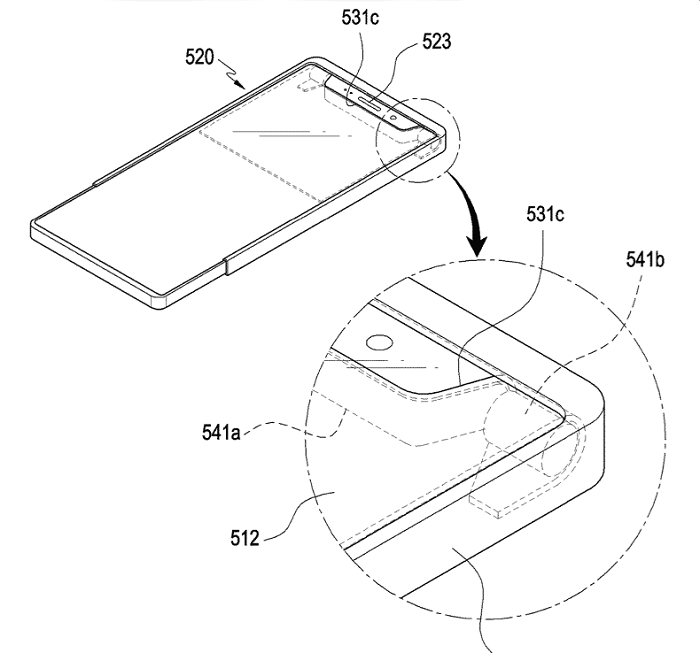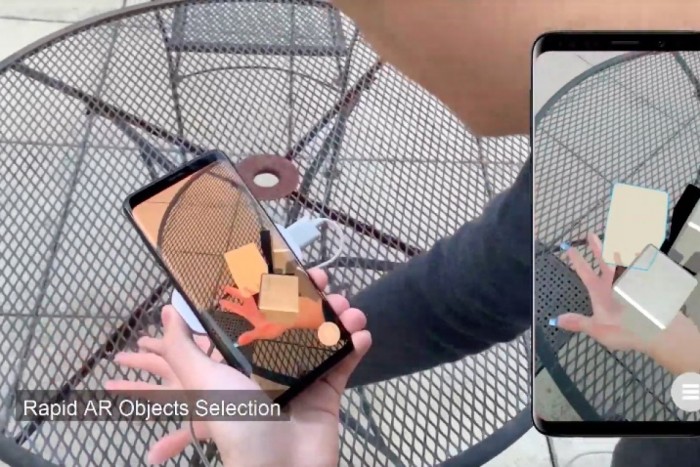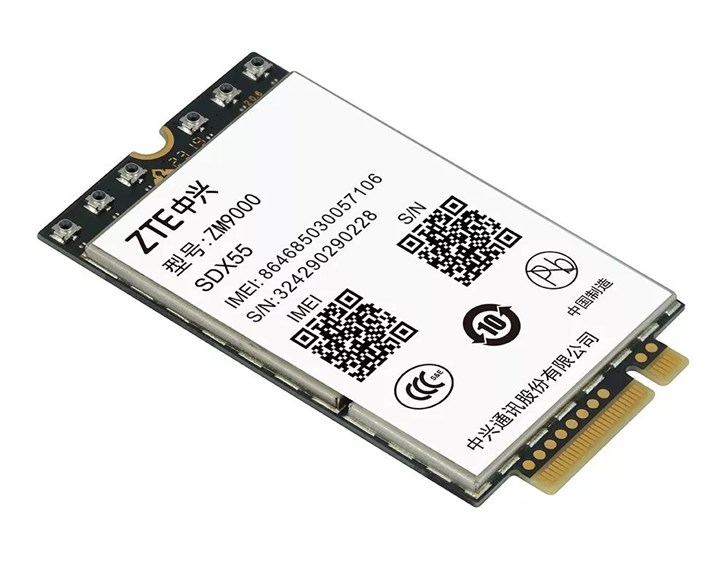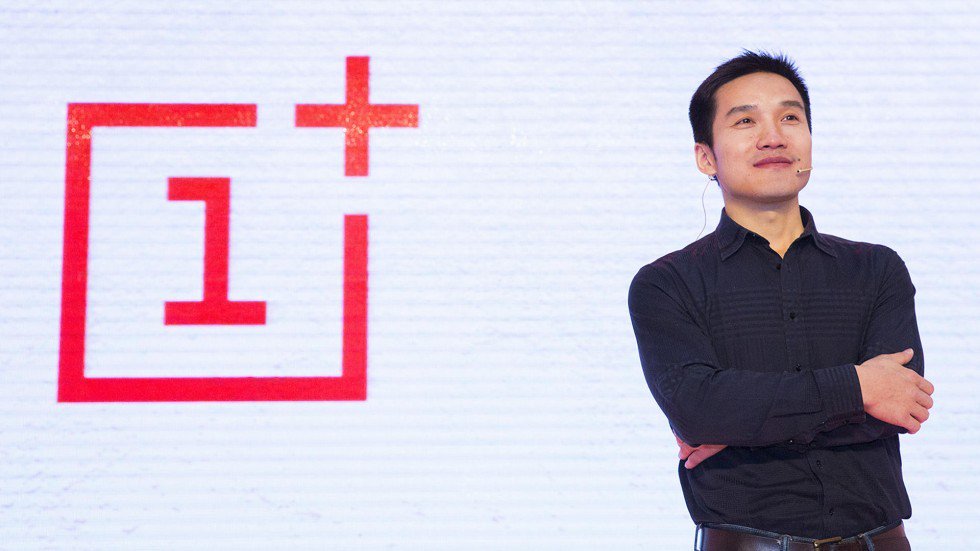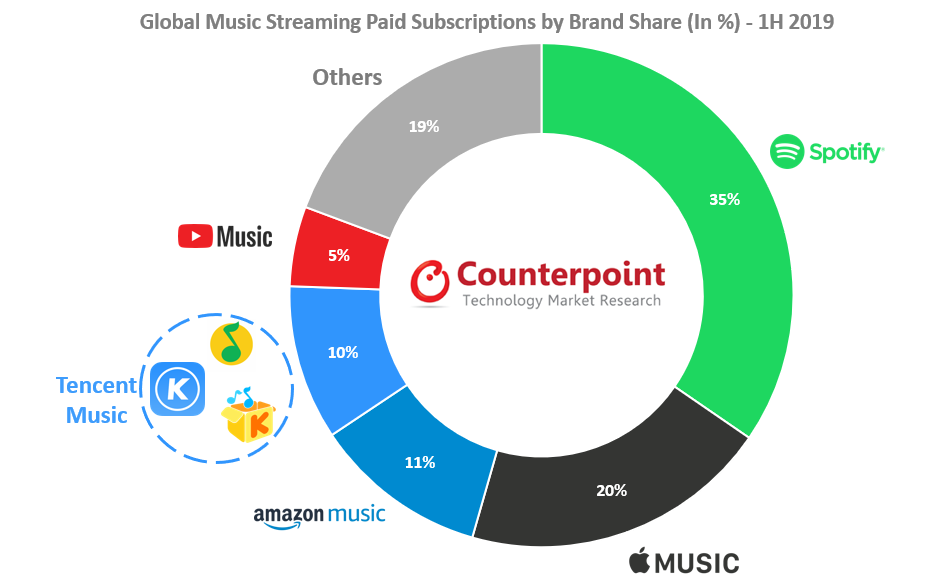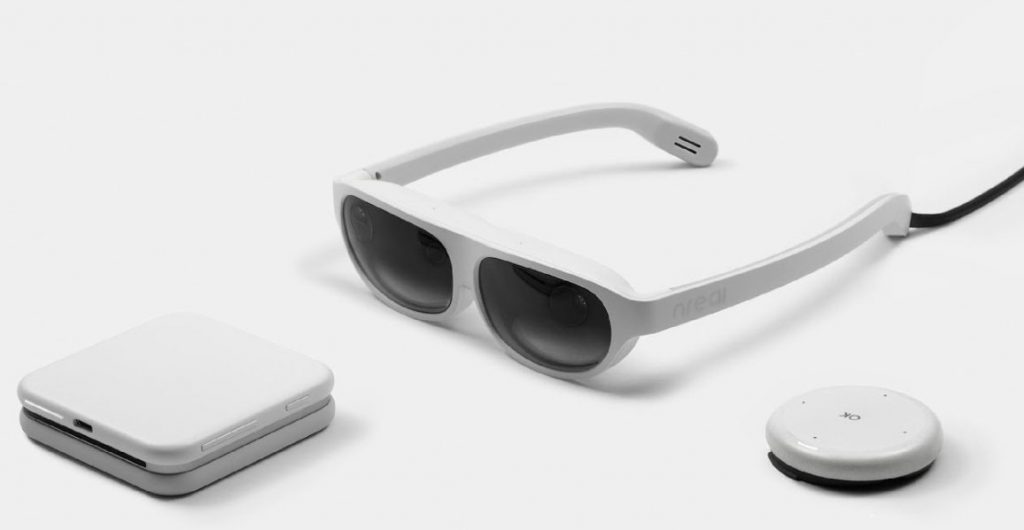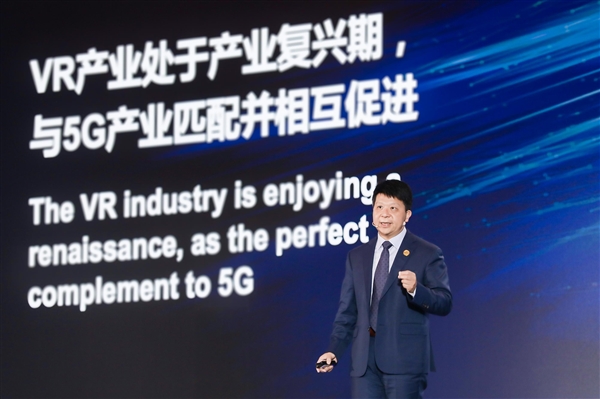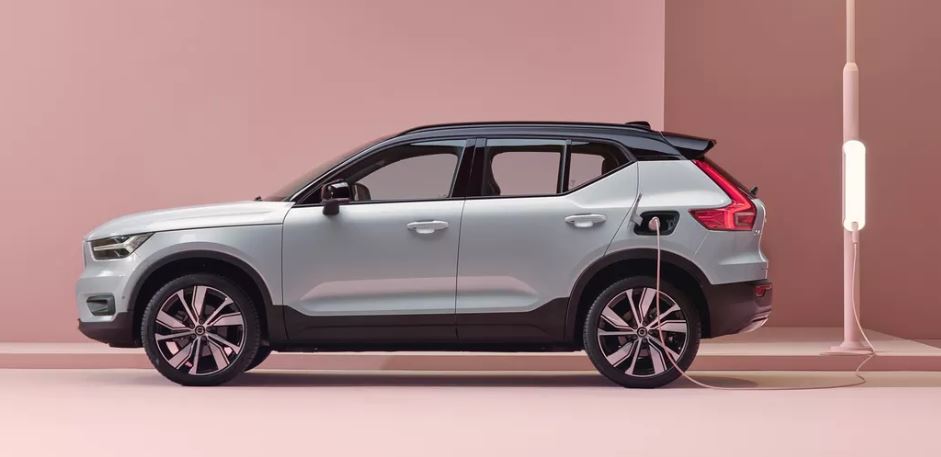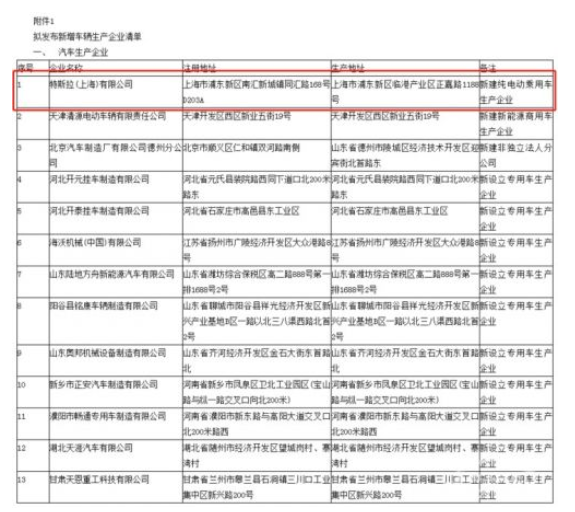
10-19: OnePlus has confirmed that the company has no plan of launching a budget or mid-range smartphone; Xiaomi is shedding its image as a budget brand by widening its India product portfolio; etc.
Chipsets
Intel is looking to unveil its first discrete GPU solution based on its Xe architecture and built using 10nm process technology by the middle of 2020, according to Digitimes. (Digitimes, press, PC GamesN, Market Realist)
Besides the premium chipsets, orders for 5G modems are keeping TSMC’s 7nm fabs running at full capacity. This leads the company to conclude that the demand for 5G smartphones will reach 300M units in 2020. (GSM Arena, Digitimes, Digitimes, Digitimes)
Illuvatar Corex has released its first official high-end edge-side AI inference chip, the Iluvar CoreX I AI chip. It adopts self-developed reasoning chip architecture, 32-core full self-developed core parallel acceleration, directed optimization of convolutional neural network (CNN), and effectively improves edge AI inference computing power, its single-chip computing power can reach 4.8T@FP16. (Laoyaoba, Caijing, CSIA)
Huawei reportedly has expanded HiSilicon factory in Wuhan, China, with a total investment of about CNY1.8B. The project construction includes software factory, production plant, power station, warehouse and hydrogen supply station, with a total construction area of about 250,000m2. (Laoyaoba, IT Home, CN Beta)
Touch Display
Samsung is reportedly considering swapping the plastic polyimide layer that it has used for its Galaxy Fold with Ultra Thin Glass (UTG) for its next foldable phone, which is expected early 2020. UTG is only only 0.1mm thick. Although Samsung is applying UTG material to clamshell design for the first time, there is a chance that Samsung will use transparent PI material for the next model for Galaxy Fold that will be introduced in 2H20. (GSM Arena, ET News)
Samsung has filed a patent with the US Patent and Trademark Office (USPTO) that mentions a design will allow for a smartphone that has a 16:9 display in standard mode but have a larger display with 18:9 aspect ratio when the display is stretched fully. (CN Beta, 91Mobiles)
Camera
Samsung has reportedly started testing for large-scale manufacturing of its under display camera tech at one of its plants. The newer version of the manufacturing process, dubbed hole-in-active-area (HIAA2), uses lasers to create a number of smaller holes in the display instead of one big aperture. A transparent display is then overlaid on top to allow the camera underneath to receive light. (Android Central, The Elec, Android Headlines, Sina, iFeng)
Supply of high-end camera lens for smartphones has been tight thanks to handset vendors rushing to incorporate multi-lens solutions into their new models, indicating bright shipment prospect for major lens makers such as Largan Precision in 4Q19 and beyond, according to Digitimes. Huawei is reportedly seeking new supply sources for optical lens to cut reliance on a single supplier and gain higher price discount. (Digitimes, press, Digitimes)
Sensory
Rhode Island’s Brown University has developed an AR system Portal-ble. When a user extends one hand out in front of themselves, the sensor detects the position of that hand in three-dimensional space. The software responds by placing a computer-generated image of the hand within the onscreen AR environment. As the user subsequently moves their actual hand, the corresponding AR hand moves accordingly, allowing them to manipulate virtual objects that appear to exist within the real world. (CN Beta, Brown University, New Atlas)
Biometrics
Samsung explains that the in-display fingerprint sensor issue relates to some “silicone screen protecting cases” and affects the Galaxy S10, S10 Plus, S10 5G, Galaxy Note 10 and Note 10 Plus. As a result, any person could then unlock a phone wrapped in such a case, creating a security issue. Until the patch is available, Samsung is advising users not to use any such covers. Samsung says that it plans to release a patch. (The Verge, Laoyaoba, Samsung, Gizmodo)
Connectivity
According to ZTE Research Institute in Xi’an, ZTE ZM9000 5G module supports 5G NSA/SA network. ZTE ZM9000 5G module is based on Qualcomm Snapdragon X55 platform. It covers the 4G/5G frequency band of the three major Chinese operators. ZM9000 adopts M.2 packaging technology. (GizChina, IT Home)
Huawei’s CEO and founder Ren Zhengfei has revealed that 6G uses high frequency, its bandwidth is very wide and the coverage is very weak. For now, it is still a fetus. It should take 10 years maybe less. He has also said that if he has the opportunity to cooperate with Japan and Europe, he can continue to work on 5G and 6G. (Laoyaoba, CNBC, GizChina, Japan Times, My Drivers)
Phone
OnePlus founder and CEO Pete Lau has confirmed that the company has no plan of launching a budget or mid-range smartphone in order to grab more percentage of market share. Further, he also said that the company has no plans of launching physical stores in China. (Gizmo China, iFeng)
Realme, OPPO and vivo are unlikely to launch any web-only models from Jan 2020 with brick-and-mortar cellphone outlets clamoring for parity when it comes to launch of similar models, discounts and promotions for both online and offline saleschannels. While Realme has given an official communication to the retailers in this regard, OPPO and vivo have agreed in-principle to restrict any online-exclusive play on their smartphones. (Gizmo China, Economic Times, ZD Review)
Xiaomi is shedding its image as a budget brand by widening its India product portfolio to include pricier, high-spec smartphones and smart TVs. Muralikrishnan B, COO of Xiaomi’s India unit has indicated that the company is trying to increase the entire average selling price (ASP) curve. (Android Authority, Gizmo China, Reuters, CNMO)
Global online music streaming revenues grew 18% year-on-year (YoY) to cross USD11B in 1H 2019, according to Counterpoint Research. Monthly Active Users (MAUs) grew 21% YoY in 1H 2019, while paid subscriptions grew 32% YoY. Counterpoint believes that online music streaming revenues will grow at a rate of more than 20% YoY to reach USD24B by the end of 2019. (Counterpoint Research, Laoyaoba)
Samsung has recently sent out an email to participants in the Linux on DeX Beta program, explaining that support for the Ubuntu distribution previously maintained and customized by Samsung has been ceased. Linux support will be removed from Dex altogether. (GSM Arena, 9to5Google, 51NB)
Huawei Enjoy 11 is announced in China – 6.39” 720×1560 HD+ hole in display, HiSilicon Kirin 710F, rear dual 48MP-2MP depth + front 8MP camera on display, 4+64 / 6+64 / 4+128GB, Android 9.0, 4000mAh 10W, no fingerprint scanner, CNY1,199 (USD170) / CNY1,399 (USD200) / CNY1,399 (USD200). (CN Beta, GSM Arena, Weibo)
ZTE Blade 20 is launched in China – 6.49” 1560×720 HD+ IPS, MediaTek Helio P60, rear tri 16MP-8MP ultrawide-2MP depth + front 8MP, 4+128GB, Android 9.0, rear fingerprint scanner, 5000mAh 18W, CNY999 (USD141). (Sparrow News, GSM Arena)
ZTE Blade A7s is announced in China – 6.08” 1560×720 HD+ IPS, MedaTek Helio P22, rear tri 16MP-8MP ultrawide-2MP depth + front 5MP, 4+64GB, Android 9.0, no fingerprint scanner, 4000mAh, CNY799 (USD113). (Gizmo China, 91Mobiles, Mobile Scout)
vivo Y11 (2019) is announced in Vietnam – 6.35” 720×1544 HD+ IPS, Qualcomm Snapdragon 439, rear dual 13MP-2MP + front 8MP, 3+32GB, Android 9.0, rear fingerprint scanner, 5000mAh 10W, VND2,99M (USD130). (GSM Arena, vivo, NDTV)
vivo U3 is launched in China – 6.53” 2340×1080 FHD+ IPS, Qualcomm Snapdragon 675, rear tri 16MP-8MP ultrawide-2MP macro + front 16MP, 4+64 / 6+64GB, Android 9.0, rear fingerprint scanner, 5000mAh 18W, CNY999 (USD141) / CNY1,199 (USD169). (Gizmo China, NDTV, IT Home, Fone Arena)
Augmented / Virtual Reality
The Beijing-based developer Nreal has revealed that the USD500 Nreal Light AR glasses will not go on sale until early 2020, though customers across China may be able to test the hardware before that. Nreal has won the full support of China Unicom, which says it will use Light to show off AR and VR applications across 400 of its retail locations. (VentureBeat, Chuang Ye)
Guo Ping, Huawei’s Rotating Chairman, VR/AR will become the first application in the 5G era. He has said that with the 5G commercial deployment, telecom operators are about to launch 5G scale construction, 2019 will be the first year of the VR industry’s renaissance period. (My Drivers, Jiemian, Sohu)
Automotive
Volvo, which is owned by Chinese automaker Geely, has unveiled the all-electric XC40 Recharge with a whole slew of futuristic features, including an infotainment system built on Google’s new embedded Android Automotive software. (The Verge, Motor1, USA Today, CN Beta)
Sony’s Sociable Cart SC-1 in collaboration with Yamaha — the autonomous vehicle-cum-party bus designed for theme parks and golf courses — has finally landed. Launching in Japan’s Kanucha Bay Resort in Nago City, and the Botanical Garden in Okinawa City, the pilot scheme kicks off with a night-time “Moonlight Cruise”. (Engadget, Sony, Digi-Wo)
The first line of the 220-kilovolt power facilities in Tesla’s Shanghai Gigafactory has come to life, marking the beginning of its pre-production stage. The plant’s mass production schedule is crucial for Tesla’s hopes of reaching its total production rate at an annualized 500,000 vehicles by the end of 2019. (CN Beta, Reuters, Forbes, Yicai Global)
